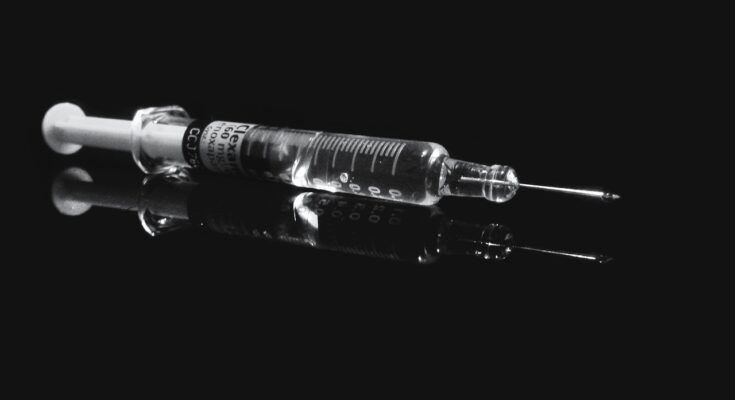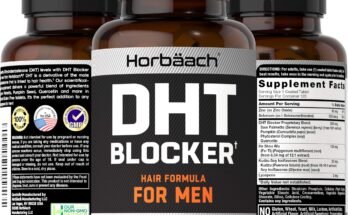PRP (Platelet-Rich Plasma) therapy has become an increasingly popular solution for hair loss in recent years. Hair loss itself can be incredibly frustrating, often diminishing self-confidence and self-worth. With a variety of treatments now available, Platelet-Rich Plasma therapy stands out as one of the more promising options. But does it truly work to reverse baldness? Let’s take a closer look at what PRP is, how it functions, its effectiveness, and the potential side effects that may come with it.
What is PRP therapy?
Platelet-rich plasma (PRP) therapy is a non-surgical approach that uses the patient’s blood to stimulate hair regrowth. Plasma and cellular components, mostly platelets, primarily make up blood and contain plenty of growth factors to repair and regenerate tissue. PRP therapy takes out these growth factors in isolation and concentrated form into a syringe and injects them into the scalp to rejuvenate hair follicles and stimulate further hair regrowth.
Can Platelet-Rich Plasma reverse baldness?
PRP does not serve as the sole effective cure for baldness. It helps slow hair loss and promotes new hair growth. PRP works best in the early stages of hair loss, especially for androgenetic alopecia. According to a study published in the 2019 Dermatologic Surgery, participants subjected to platelet-rich plasma injection showed superior improvement in hair density than those who had not undergone therapy.
How does PRP therapy work?
PRP therapy involves three steps:
1. A small amount of blood is drawn from the patient (about 30-60ml) from the arm.
2. The blood is placed in a centrifuge, which spins the blood really fast to separate the plasma from the red and white blood cells. The pigment-rich plasma is then collected.
3. Doctors inject concentrated platelet-rich plasma into thinning areas on the scalp, awakening dormant hair follicles and boosting hair growth.
The procedure takes under 45 minutes to an hour, doctors perform it on an outpatient basis, and patients experience little to no downtime.
When Does PRP Therapy Work Best?
PRP has been found highly effective in the following criteria:
- An early stage of hair loss: The earlier one can initiate PRP therapy, it is ideal to do so because platelet-rich plasma works more effectively in mild to moderate thinning hair rather than in baldness.
- Subsequent Treatment: Most patients will require at least several sessions of treatments (from 3-6 treatments over a couple of months) to see substantial efficacy.
- With Combination with Other Treatments: PRP is often used in conjunction with medications like minoxidil (Rogaine) or finasteride (Propecia).
Does PRP Cause Any Side Effects?
On account of the fact that PRP uses the blood of the patient, thereby limiting the probability of allergic reaction; the following side effects include:
- Mild Pain or Discomfort: There are instances where patients tend to suffer minor pain in the area of injection.
- Swelling/Redness: It is common to have temporary swelling of the scalp; it goes away in a couple of hours or may last for a couple of days.
- Bruising: Some slight bruising of the injection sites typically happens.
- Infection (very rare): There is a very small risk of infection if sterilization is not adequately maintained.
What Is Research Saying about platelet-rich plasma for Hair Loss?
- A 2014 study published in the Journal of Cutaneous and Aesthetic Surgery: PRP administration showed a significantly higher increase in hair count and thickness among patients with androgenetic alopecia with good statistical support.
- In 2020, another study published in the International Journal of Trichology claimed that platelet-rich plasma improved up to 30% hair density over six months.
- A 2022 meta-analysis in Aesthetic Plastic Surgery evaluated investigational data anecdotally. Researchers observed that 70% of treated patients reported increased hair growth and improved thickness.
PRP is Best for you if:
- You are experiencing signs of thinning hair instead of missing out on full baldness.
- You want a natural non-surgical treatment.
- You are willing to go through multiple sessions for the best results.
- You have sets of realistic expectations- platelet-rich plasma can increase hair thickness and density, but it might not be able to restore the level of fullness that would have naturally been there.
A Brief Conclusion:
PRP is a very exciting advancement in the treatment of hair loss; though it may not, in all cases, completely restore baldness, it can slow down the pace of hair thinning considerably and stimulate regrowth in the said early stages of hair loss. In whichever form or manner, consulting a doctor in regard to any answer or decision to make is essential in determining if platelet-rich plasma is an effective solution for whatever issue concerns hair loss.
FAQs about PRP for Hair Loss
1. How soon can results be seen with PRP therapy?
Most patients notice regrowth of their hair within three to six months of commencing platelet-rich plasma sessions.
2. Is PRP therapy painful?
The procedure causes mild discomfort, but doctors can use numbing agents if a patient reports significant pain.
3. How many PRP sessions are necessary?
Typically, physicians suggest three to six PRP sessions, with patients receiving them about four to six weeks apart. Maintenance treatments are then usually done every couple of months.
4. Can PRP honestly restore a bald scalp?
platelet-rich plasma should work best on those who still have hair-thinning issues rather than those who are completely bald. It does its works by strengthening existing hair follicles as opposed to creating new hair follicles.
5. Can PRP treatment combine with other hair-loss treatments?
Yes, doctors commonly combine platelet-rich plasma with minoxidil, finasteride, or hair transplantation to optimize treatment results.
6. Is PRP meant for everybody?
platelet-rich plasma is generally safe, but those suffering from specific medical conditions, like blood disorders or active infections, may not qualify.
7. What is the cost of PRP therapy?
Cost depends on the localities and providers, so it ranges from $500 to about $2,500 with the average cost presents around $1,500.
8. Are there any risks or side effects associated with PRP?
Because platelet-rich plasma is harvested from your own blood, the risks are a little, but they may include minor bruising or discomfort or infection at the injection sites.
9. Can PRP help with other types of hair loss beyond androgenetic alopecia?
platelet-rich plasma may also be effective in cases of hair loss due to stress, hormonal changes, or certain conditions-a big factor in its effectiveness.




